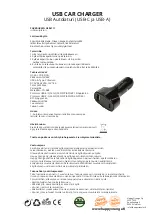
STARTING AND OPERATING
139
DIESEL EXHAUST BRAKE — ENGINE
BRAKING (IF EQUIPPED)
The purpose of the exhaust brake (engine braking) feature
is to supply negative (braking) torque from the engine.
Typically, the engine braking is used for, but not limited to,
vehicle towing applications where vehicle braking can be
achieved by the internal engine power, thereby sparing the
mechanical brakes of the vehicle.
Benefits of the exhaust brake are:
Vehicle driving control.
Reduced brake fade.
Longer brake life.
Faster cab warm-up.
The exhaust brake feature will only function when the
driver toggles it on by pushing the exhaust brake button
until the Exhaust Brake Indicator is illuminated. Normal
(Full Strength) exhaust brake mode is indicated by a yellow
Exhaust Brake Indicator.
Exhaust Brake Switch
Once the Exhaust Brake Indicator is illuminated and the
vehicle is moving faster than 5 mph (8 km/h); the exhaust
brake will automatically operate when the driver removes
pressure from the accelerator pedal. Exhaust braking is
most effective when the engine RPM is higher. The
automatic transmission will downshift more aggressively
in TOW/HAUL mode when the exhaust brake is enabled to
increase brake performance.
NOTE:
For optimum braking power it is recommended to use the
exhaust brake while in TOW/HAUL mode.
The exhaust brake feature can also be used to reduce the
engine warm-up time. To use the exhaust brake as a
warm-up device, the vehicle must be stopped or moving
less than 5 mph (8 km/h), the Exhaust Brake Indicator
must be on, and the coolant temperature must be
below 180°F (82°C) and ambient temperature below
60°F (16°C).
Automatic “Smart” Exhaust Brake
Automatic “Smart” Exhaust Brake technology delivers
smoother, less aggressive exhaust braking characteristics
during downhill descents. Although it can apply full
exhaust braking force if needed, Automatic “Smart”
Exhaust Brake may not apply obvious braking if the vehicle
speed is not increasing. Automatic “Smart” Exhaust Brake
is intended to maintain vehicle speed, while Full Exhaust
Brake is intended to reduce vehicle speed.
Automatic “Smart” Exhaust Brake can be enabled by
pushing the exhaust brake button (on the center stack)
again anytime after the normal Full Exhaust Brake has
been turned on. The Exhaust Brake Indicator in the
instrument cluster display will change from Yellow to
Green when Automatic “Smart” Exhaust Brake is enabled.
Pushing the exhaust brake button again will toggle the
exhaust brake mode to off.
WARNING!
Do not use the exhaust brake feature when driving in
icy or slippery conditions as the increased engine
braking can cause the rear wheels to slide and the
vehicle to swing around with the possible loss of vehicle
control, which may cause an accident possibly resulting
in personal injury or death.
CAUTION!
Use of aftermarket exhaust brakes is not recommended
and could lead to engine damage.
4
23_DJD2_OM_EN_USC_t.book Page 139
Содержание 2500 2023
Страница 94: ...92 GETTING TO KNOW YOUR INSTRUMENT PANEL MIDLINE INSTRUMENTCLUSTER GASENGINE 23_DJD2_OM_EN_USC_t book Page 92...
Страница 100: ...98 GETTING TO KNOW YOUR INSTRUMENT PANEL MIDLINE INSTRUMENTCLUSTER DIESEL ENGINE 23_DJD2_OM_EN_USC_t book Page 98...
Страница 102: ...100 GETTING TO KNOW YOUR INSTRUMENT PANEL HIGHLINE INSTRUMENT CLUSTER DIESEL ENGINE 23_DJD2_OM_EN_USC_t book Page 100...
Страница 104: ...102 GETTING TO KNOW YOUR INSTRUMENT PANEL PREMIUM INSTRUMENT CLUSTER DIESEL 23_DJD2_OM_EN_USC_t book Page 102...
















































